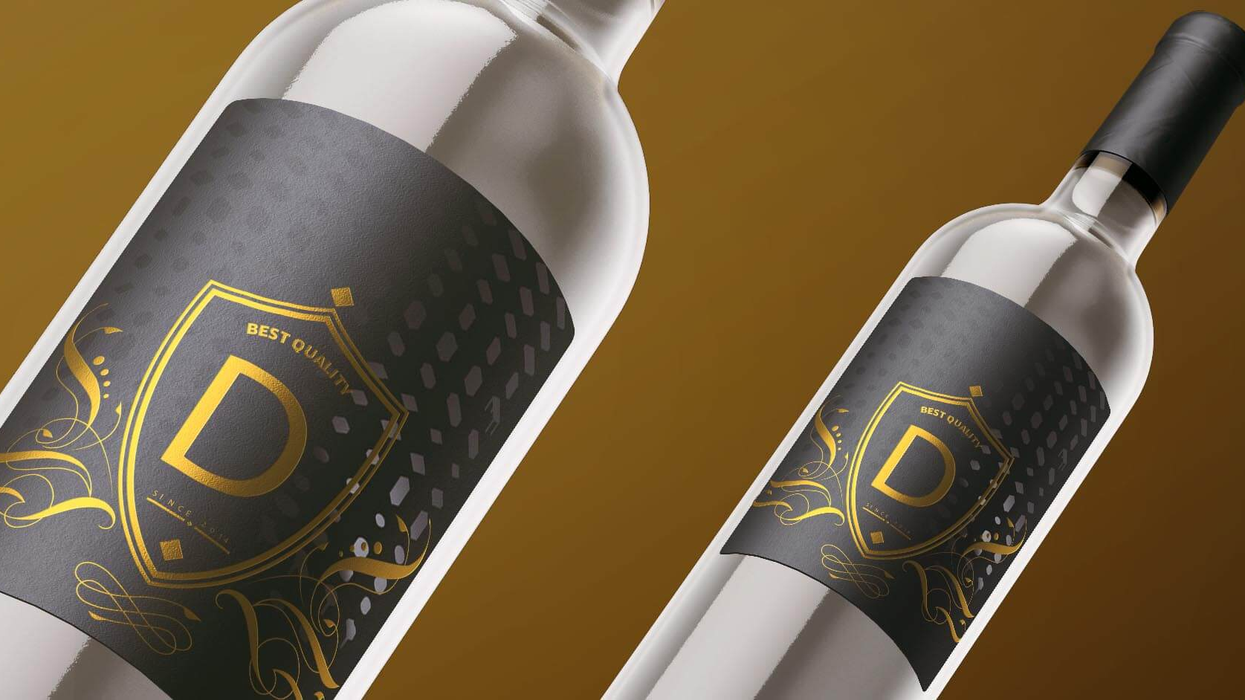Would you buy a great wine with bad labelling?
You would think twice before buying it. On the other hand, you would be readily inclined to buy even an unfamiliar brand of wine with extraordinary labelling. Wouldn’t you?
A great bottle of wine is only as good as its label. A well-designed and printed label can make all the difference in catching the eye of potential customers and encouraging them to make the purchase.
Whether you are a winemaker, distiller, or importer, here are 6 tips for perfect wine label printing.
1. Choose Quality Materials
When it comes to printing labels for your wine bottles, quality materials matter—not only for design purposes but for practicality.
Using high-quality materials is essential if you want your wine label to remain in place and survive any environmental changes, such as heat or moisture. For this purpose, you choose waterproof paper material with an adhesive backing.
The best kind of material for water-resistant labels is polypropylene or polyethylene terephthalate (PET). These materials can withstand both temperature changes and moisture. Additionally, they provide high flexibility when applied to curved or irregular surfaces, which is ideal for bottles of various shapes and sizes.
Further, instead of printing text on paper, you can also employ higher quality materials such as leather or metal with embossed letters. It makes your label appear and feel more lavish than if you had simply used plain paper without any decorations.
Bottomline: Material matters!
2. Invest in Professional Design Services
Unless you are well acquainted with the art of designing, you have to get a professional label designer on board your project.
Choosing a professional designer will ensure that your label stands out from the competition by creating a unique look that fits your brand identity. Even if you have an existing design, having it tweaked by a professional could make all the difference in how attractive customers find it at first glance.
3. Use High-Quality Ink & Printing Processes
Using high-quality ink and advanced printing processes is also crucial when printing labels for wine bottles.
You need ink that can withstand natural elements, such as light, moisture, or heat, without fading or smudging over time. Additionally, using advanced digital printing processes ensures accurate colours and precise details that make your label look its best when applied to bottles.
4. Consider Holographic Labels
Holographic labels carry product information as well as details about the brand's security and authenticity. These are quite popular and generally come in stunning colour combinations and designs with practically difficult-to-imitate content.
Adding holographic elements to your label design adds a unique touch that helps create more interest in your product at first glance.
It also provides added security against counterfeiting and tampering, which could be beneficial if you are shipping alcohol products overseas where regulations are stricter than domestic ones.
Holograms cost more than standard designs, but if you need that added layer of protection, they may be worth investing in.
5. Get Creative
This is most important—do not hesitate to be inventive.
Experimenting with colours, materials, and fonts has been an age-old practice. They are still great, but if you want to really make an impression on your customer, try something unconventional. However, do not forget your brand personality while chasing creativity. It should not diverge from what your brand stands for.
For instance, you can try unique finishing techniques like foil stamping, embossing, or debossing in your design to give dimension and draw customers' attention to shelves stacked with flat-labelled bottles.
Using die-cut labels and adding imagery is another brilliant way to impress customers. One thing to keep in mind is to break the monotony. Most brands make the mistake of labelling wine bottles a certain way that it has become monotonous for the customer’s eye. So it’s a great idea to get out of the shell and make something out of the box.
In a nutshell, there’s a whole new world of creative labelling. Dabble in it a little and see how you can leverage it for your brand.
6. Test Different Adhesives
If you think all adhesives are the same, you are wrong!
When applying labels to wine bottles, different adhesives work better with different materials. For instance, the kind of adhesive that works great on paper may not work on glass and plastic containers. So it's important to test them before committing to any type of adhesive.
Testing different adhesives will also help determine which types provide better durability over time. Considering the fact that alcohol products often come into contact with humidity and temperature changes, the wrong adhesive can land you in trouble easily.
Conclusion
The right labelling can make all the difference when it comes to selling alcohol products like wines and spirits. The right label not only makes the overall product attractive but also provides added security against counterfeiting or tampering while standing the test of time!
So the basics needed to print great wine labels are quality materials, professional design services, high-quality ink & printing processes, holographic elements, creativity, and durable adhesives. If you can ensure these key ingredients for producing great-looking wine labels, your products will be sure to catch customers’ eyes on store shelves worldwide!
We hope you have more understanding of wine labels after reading this article. With these tips in hand, you should have no problem creating amazing-looking wine labels that perfectly match your brand identity while ensuring their longevity too!
Most importantly, having the best labelling partner is crucial in every step of this process. One such partner is DAL, the most reliable label printer in Australia.













